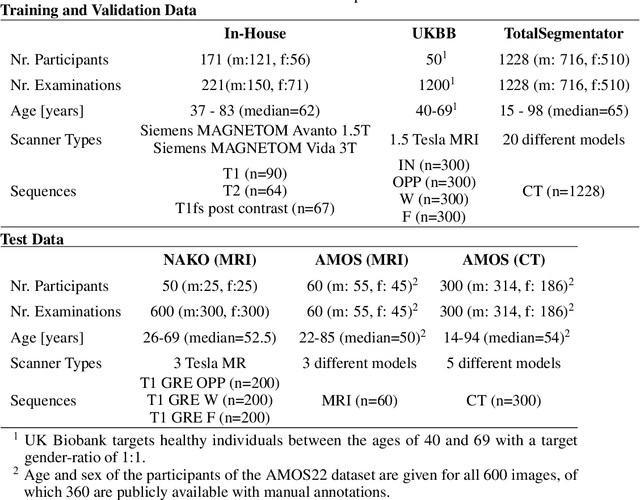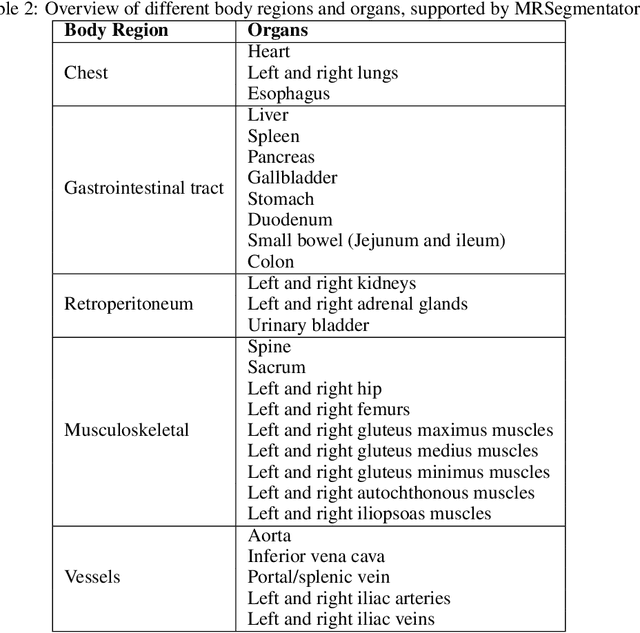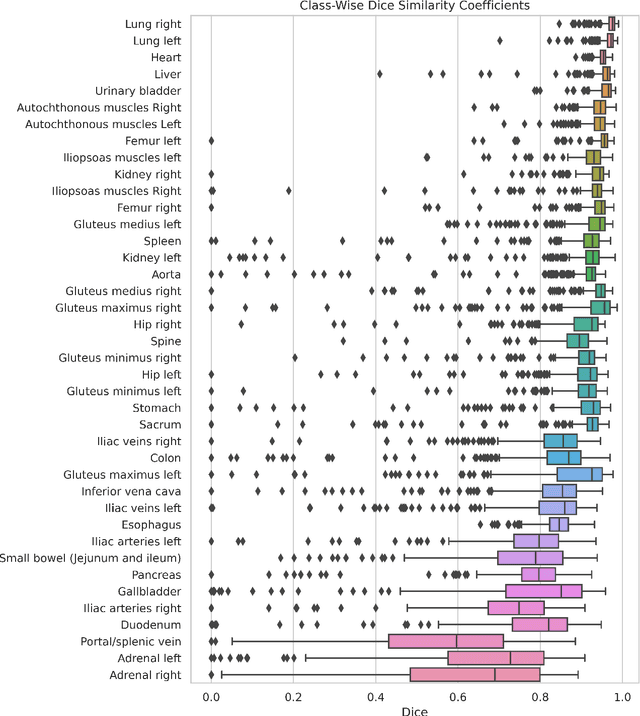Hugo Aerts
MedBrowseComp: Benchmarking Medical Deep Research and Computer Use
May 20, 2025Abstract:Large language models (LLMs) are increasingly envisioned as decision-support tools in clinical practice, yet safe clinical reasoning demands integrating heterogeneous knowledge bases -- trials, primary studies, regulatory documents, and cost data -- under strict accuracy constraints. Existing evaluations often rely on synthetic prompts, reduce the task to single-hop factoid queries, or conflate reasoning with open-ended generation, leaving their real-world utility unclear. To close this gap, we present MedBrowseComp, the first benchmark that systematically tests an agent's ability to reliably retrieve and synthesize multi-hop medical facts from live, domain-specific knowledge bases. MedBrowseComp contains more than 1,000 human-curated questions that mirror clinical scenarios where practitioners must reconcile fragmented or conflicting information to reach an up-to-date conclusion. Applying MedBrowseComp to frontier agentic systems reveals performance shortfalls as low as ten percent, exposing a critical gap between current LLM capabilities and the rigor demanded in clinical settings. MedBrowseComp therefore offers a clear testbed for reliable medical information seeking and sets concrete goals for future model and toolchain upgrades. You can visit our project page at: https://moreirap12.github.io/mbc-browse-app/
Sparse Autoencoder Features for Classifications and Transferability
Feb 17, 2025Abstract:Sparse Autoencoders (SAEs) provide potentials for uncovering structured, human-interpretable representations in Large Language Models (LLMs), making them a crucial tool for transparent and controllable AI systems. We systematically analyze SAE for interpretable feature extraction from LLMs in safety-critical classification tasks. Our framework evaluates (1) model-layer selection and scaling properties, (2) SAE architectural configurations, including width and pooling strategies, and (3) the effect of binarizing continuous SAE activations. SAE-derived features achieve macro F1 > 0.8, outperforming hidden-state and BoW baselines while demonstrating cross-model transfer from Gemma 2 2B to 9B-IT models. These features generalize in a zero-shot manner to cross-lingual toxicity detection and visual classification tasks. Our analysis highlights the significant impact of pooling strategies and binarization thresholds, showing that binarization offers an efficient alternative to traditional feature selection while maintaining or improving performance. These findings establish new best practices for SAE-based interpretability and enable scalable, transparent deployment of LLMs in real-world applications. Full repo: https://github.com/shan23chen/MOSAIC.
WorldMedQA-V: a multilingual, multimodal medical examination dataset for multimodal language models evaluation
Oct 16, 2024Abstract:Multimodal/vision language models (VLMs) are increasingly being deployed in healthcare settings worldwide, necessitating robust benchmarks to ensure their safety, efficacy, and fairness. Multiple-choice question and answer (QA) datasets derived from national medical examinations have long served as valuable evaluation tools, but existing datasets are largely text-only and available in a limited subset of languages and countries. To address these challenges, we present WorldMedQA-V, an updated multilingual, multimodal benchmarking dataset designed to evaluate VLMs in healthcare. WorldMedQA-V includes 568 labeled multiple-choice QAs paired with 568 medical images from four countries (Brazil, Israel, Japan, and Spain), covering original languages and validated English translations by native clinicians, respectively. Baseline performance for common open- and closed-source models are provided in the local language and English translations, and with and without images provided to the model. The WorldMedQA-V benchmark aims to better match AI systems to the diverse healthcare environments in which they are deployed, fostering more equitable, effective, and representative applications.
Wait, but Tylenol is Acetaminophen... Investigating and Improving Language Models' Ability to Resist Requests for Misinformation
Sep 30, 2024Abstract:Background: Large language models (LLMs) are trained to follow directions, but this introduces a vulnerability to blindly comply with user requests even if they generate wrong information. In medicine, this could accelerate the generation of misinformation that impacts human well-being. Objectives/Methods: We analyzed compliance to requests to generate misleading content about medications in settings where models know the request is illogical. We investigated whether in-context directions and instruction-tuning of LLMs to prioritize logical reasoning over compliance reduced misinformation risk. Results: While all frontier LLMs complied with misinformation requests, both prompt-based and parameter-based approaches can improve the detection of logic flaws in requests and prevent the dissemination of medical misinformation. Conclusion: Shifting LLMs to prioritize logic over compliance could reduce risks of exploitation for medical misinformation.
Language Models are Surprisingly Fragile to Drug Names in Biomedical Benchmarks
Jun 17, 2024Abstract:Medical knowledge is context-dependent and requires consistent reasoning across various natural language expressions of semantically equivalent phrases. This is particularly crucial for drug names, where patients often use brand names like Advil or Tylenol instead of their generic equivalents. To study this, we create a new robustness dataset, RABBITS, to evaluate performance differences on medical benchmarks after swapping brand and generic drug names using physician expert annotations. We assess both open-source and API-based LLMs on MedQA and MedMCQA, revealing a consistent performance drop ranging from 1-10\%. Furthermore, we identify a potential source of this fragility as the contamination of test data in widely used pre-training datasets. All code is accessible at https://github.com/BittermanLab/RABBITS, and a HuggingFace leaderboard is available at https://huggingface.co/spaces/AIM-Harvard/rabbits-leaderboard.
MRSegmentator: Robust Multi-Modality Segmentation of 40 Classes in MRI and CT Sequences
May 10, 2024



Abstract:Purpose: To introduce a deep learning model capable of multi-organ segmentation in MRI scans, offering a solution to the current limitations in MRI analysis due to challenges in resolution, standardized intensity values, and variability in sequences. Materials and Methods: he model was trained on 1,200 manually annotated MRI scans from the UK Biobank, 221 in-house MRI scans and 1228 CT scans, leveraging cross-modality transfer learning from CT segmentation models. A human-in-the-loop annotation workflow was employed to efficiently create high-quality segmentations. The model's performance was evaluated on NAKO and the AMOS22 dataset containing 600 and 60 MRI examinations. Dice Similarity Coefficient (DSC) and Hausdorff Distance (HD) was used to assess segmentation accuracy. The model will be open sourced. Results: The model showcased high accuracy in segmenting well-defined organs, achieving Dice Similarity Coefficient (DSC) scores of 0.97 for the right and left lungs, and 0.95 for the heart. It also demonstrated robustness in organs like the liver (DSC: 0.96) and kidneys (DSC: 0.95 left, 0.95 right), which present more variability. However, segmentation of smaller and complex structures such as the portal and splenic veins (DSC: 0.54) and adrenal glands (DSC: 0.65 left, 0.61 right) revealed the need for further model optimization. Conclusion: The proposed model is a robust, tool for accurate segmentation of 40 anatomical structures in MRI and CT images. By leveraging cross-modality learning and interactive annotation, the model achieves strong performance and generalizability across diverse datasets, making it a valuable resource for researchers and clinicians. It is open source and can be downloaded from https://github.com/hhaentze/MRSegmentator.
Cross-Care: Assessing the Healthcare Implications of Pre-training Data on Language Model Bias
May 09, 2024



Abstract:Large language models (LLMs) are increasingly essential in processing natural languages, yet their application is frequently compromised by biases and inaccuracies originating in their training data. In this study, we introduce Cross-Care, the first benchmark framework dedicated to assessing biases and real world knowledge in LLMs, specifically focusing on the representation of disease prevalence across diverse demographic groups. We systematically evaluate how demographic biases embedded in pre-training corpora like $ThePile$ influence the outputs of LLMs. We expose and quantify discrepancies by juxtaposing these biases against actual disease prevalences in various U.S. demographic groups. Our results highlight substantial misalignment between LLM representation of disease prevalence and real disease prevalence rates across demographic subgroups, indicating a pronounced risk of bias propagation and a lack of real-world grounding for medical applications of LLMs. Furthermore, we observe that various alignment methods minimally resolve inconsistencies in the models' representation of disease prevalence across different languages. For further exploration and analysis, we make all data and a data visualization tool available at: www.crosscare.net.
 Add to Chrome
Add to Chrome Add to Firefox
Add to Firefox Add to Edge
Add to Edge